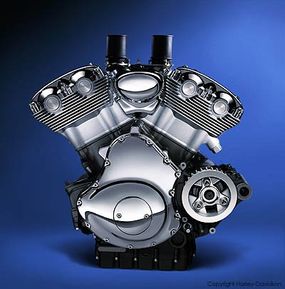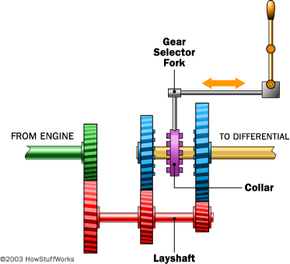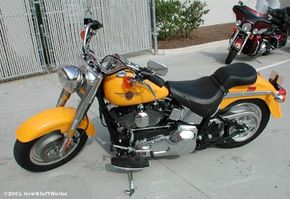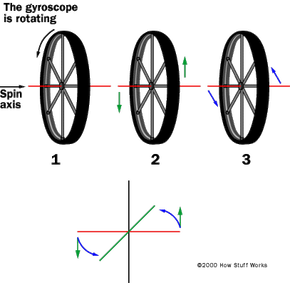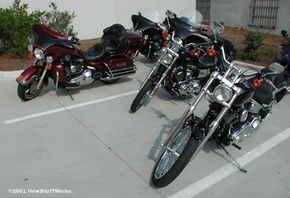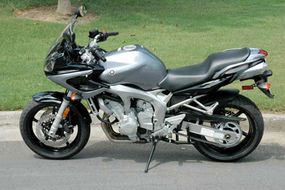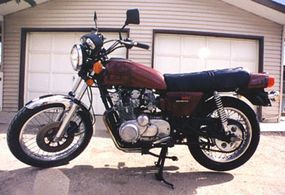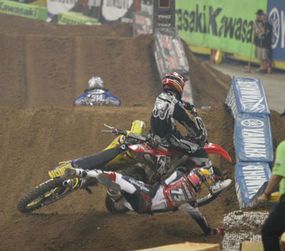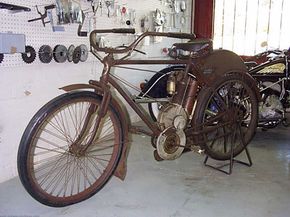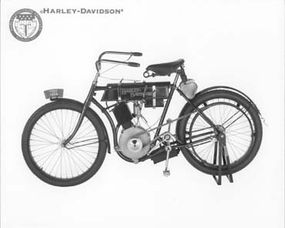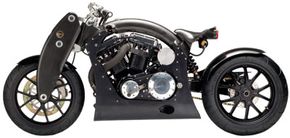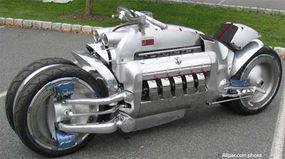Driving a motorcycle is very different from driving a car. Since motorcycles are two-wheeled vehicles, they topple over when they stop moving. A moving motorcycle is affected by gyroscopic forces that are unique to two-wheeled machines. As a result, new motorcyclists must develop the skills necessary to handle their machines and must be licensed before they can drive their motorcycles on the street. In particular, motorcycle riders must master the art of steering, braking and changing gears.
Steering
Steering a motorcycle at low speeds is a straightforward process. The rider simply turns the handlebar in the direction he wishes to go. This only works at speeds below five miles an hour. If a motorcycle is traveling any faster, the rider must use a different kind of steering, known as counter-steering. This type of steering may seem counterintuitive. That's because motorcycle riders must push the handlebars to the left to make the vehicle turn right and vice versa.
Here's how it would work out on the street. Imagine that you're riding a motorcycle on the interstate. In front of you, blocking the right half of your lane, is a wreck or some other obstacle. If you're a novice rider, you might be tempted to push on the right side of the handlebar, thinking this will turn the bike to left. In reality, this will steer the bike to the right, directly into the obstacle. Instead, you should push on the left side of the handlebar, which directs the front wheel to the right but steers the vehicle to the left.
Why does a motorcycle work this way? The motorcycle's wheels act like gyroscopes and create gyroscopic forces when moving at speeds above five miles an hour. One of the most interesting effects related to a gyroscope is a phenomenon known as precession. When a force is applied perpendicular to a gyroscope's axis of rotation, the resulting motion is perpendicular to the input force. This motion is called precession, and it's what causes the steering in motorcycles to be counterintuitive. It's also why instructors often arm their beginning riders with a simple mnemonic: "Push left, turn left. Push right, turn right."
Braking
Stopping a moving motorcycle requires that the rider use two brakes -- one on the front wheel, controlled by the right hand, and one on the rear wheel, controlled by the right foot. Both brakes should be used at the same time, although the front brakes are more powerful and will typically provide 70 to 90 percent of the total braking force. New riders often fear using the front brake, but it should be applied every time a motorcycle is slowed or stopped. Many accidents are caused by riders braking incorrectly. According to the California Highway patrol, locking up the rear brakes is a factor in the majority of motorcycle crashes.
Changing Gears
Early motorcycle clutches were operated by a foot pedal in the same way that automobile drivers use clutches. This was awkward and dangerous because it required that the rider's left foot be off the ground when the bike came to complete stop (at an intersection, for instance). British designers solved this problem with a hand-operated clutch. Today, hand-operated clutches and foot-operated shifters are standard on all models.
Braking Advice
When a motorcycle experiences a rapid deceleration, weight shifts to the front wheel. This makes the back of the bike lighter and can result in the rear wheel locking up and skidding. In this situation, riders should simply keep the rear brake applied and focus their eyes on the horizon where they want the bike to go. The bike will continue to skid, but in a controllable manner with little fishtailing.
When the front wheel locks up, riders should ease off the front brake. If they don't, the front wheel can tuck under the bike, causing a fall. The best way to avoid a front lockup is to use a technique called "staged braking." In staged braking, the rider progresses through four stages, with each stage corresponding to a greater amount of pressure applied to the front brake:
- Stage one has the rider applying the brake just to the point where there is the slightest friction between the brake pads and disc.
- In stage-two braking, the rider progresses to stage one, then continues to apply a steadier force.
- By stage four, which is usually reserved for emergencies that require rapid deceleration, the rider bears down on the brake as hard as possible, but only after progressing through the other stages.
This kind of progressive braking will serve motorcyclists in all driving situations and will usually prevent a front lockup.
In the next section, we'll explore the many different types of motorcycles.

